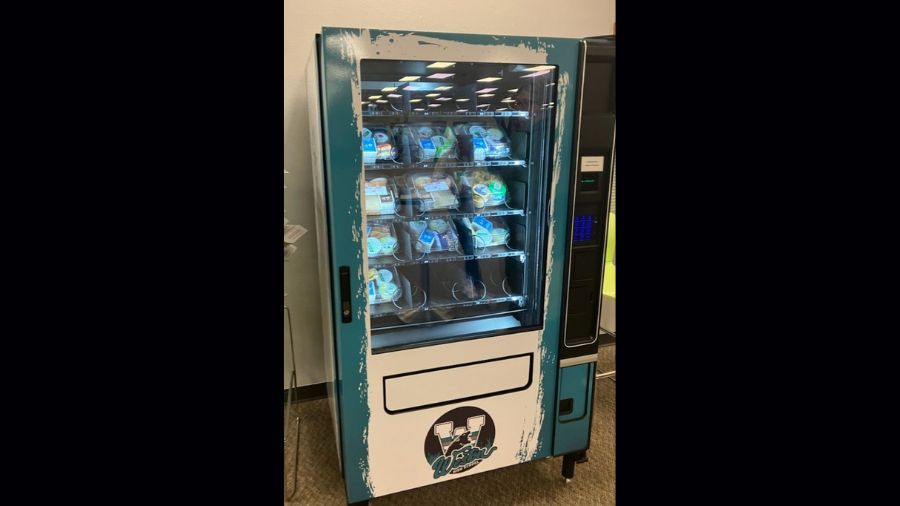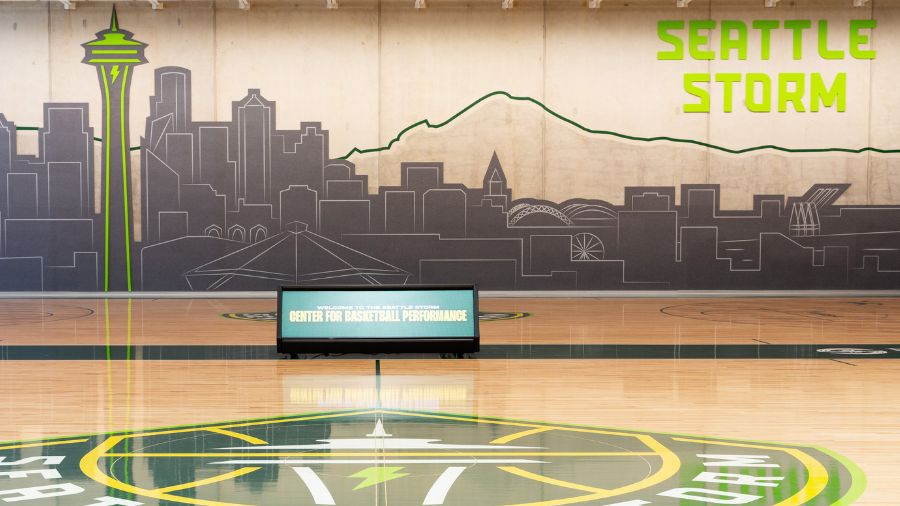The architect who argued against the Alaskan Way Viaduct in 1947
Jan 16, 2019, 12:41 PM | Updated: 2:16 pm

Seattle architect Paul Thiry in 1965, and a newspaper clipping from The Seattle Times from 1947, showing Thiry's call for a tunnel rather than the viaduct. (MOHAI, Feliks Banel)
(MOHAI, Feliks Banel)
Quick Quiz: Do you know who the 520 bridge is named for?
Answer: Governor Albert Rosellini.
Quick Quiz, Part Two: Do you know why the 520 bridge is named for him?
RELATED: A viaduct history lesson with Feliks Banel
Rosellini was governor when the original bridge opened in 1963, and, more importantly, he was a state senator who was involved in the planning for — and funding of — that bridge in the mid-1950s.
So it made a lot of sense to name it in Rosellini’s honor, even if nobody calls it anything other than the 520 bridge, the same way nobody calls what’s left of the original I-90 bridge the Lacey V. Murrow, and nobody calls the newer one built alongside it the Homer Hadley.
But the new tunnel is a pretty significant piece of public infrastructure whose development and construction has been a soap opera that’s been running for almost 18 years.
So, over at the Washington State Transportation Commission, the public agency that decides these things, you’d think the name proposals would be pouring in.
“There are no proposals on the table before us that have been submitted to name the tunnel,” said Reema Griffith, executive director of the commission, earlier this week. “It’s not unlike any other state highway in our state, it has its number assigned as state route 99 and that’s its official name that appears on all maps.”
Chris Sullivan told KIRO Radio listeners a few months ago how the naming process works, and I prepared my own list of possibilities, but here’s a quick refresher on how it works.
According to Reema Griffith, there are two pathways: Names are either submitted by the public and then vetted by the commission, or the state Legislature passes a piece of legislation calling on the commission to name a bridge, a ferry boat, or a section of highway in honor of some person or group.
For the tunnel, some people have mentioned former Governor Christine Gregoire as a possible namesake because she took action in 2009 to end the debate and replace the viaduct with a deep-bore tunnel.
Regarding having the tunnel named for her, Gregoire was quoted by The Seattle Times in December saying that she’s “not dead.” Though, by the rules here in Washington state, you don’t have to be dead to have a transportation asset name for you. Governor Rosellini, for example, was very much alive when 520 was renamed in his honor in 1988.
KIRO Radio reached out multiple times to the “not dead” former Governor Gregoire this week through the organization she now heads, called Challenge Seattle, to see what her current thinking is regarding being the possible tunnel namesake. We know she’s not dead, but we never heard back from her.
A suggestion for naming the new tunnel
A few years ago, I was doing some research into viaduct history and came across a clipping in The Seattle Times from November 9, 1947, when planning was already well underway for the Alaskan Way Viaduct.
In the newspaper story, Seattle architect Paul Thiry (pronounced like “theory”) essentially says, “forget building the viaduct, build a tunnel under downtown instead.”
Thiry said a viaduct would block views of Elliott Bay, would not solve downtown traffic issues, and would interfere with the working waterfront.
The tunnel that Thiry envisioned wasn’t deep bore. It would’ve run from 8th and Jackson, on the edge of the International District, to Eastlake Avenue and Yale Street, which is, coincidentally, about 100 yards from where KIRO Radio now stands.
This was long before Interstate 5, of course, and it’s not clear how Thiry’s tunnel would’ve connected to Highway 99 and the Aurora Bridge. That would seem like one of the main points of building a traffic bypass through downtown Seattle, and is certainly part of the role that the viaduct played for more than 60 years.
RELATED: Will we miss the viaduct once it’s torn down?
Though planners didn’t listen to Paul Thiry about the viaduct, he did have a pretty decent career around here and around the world. He was born in Nome, Alaska in 1904, and graduated with an architecture degree from the University of Washington in 1928.
Locally, he designed the original old Museum of History & Industry (MOHAI) that used to be in Montlake, the original Frye Museum on First Hill, Saint Demetrios Greek Orthodox Church in Montlake, and the Washington State Pavilion for the 1962 World’s Fair, currently known as KeyArena.
Thiry was also the supervising architect for all of the 1962 World’s Fairgrounds, or what’s now Seattle Center. And, as a member of the City Planning Commission in 1961, he wanted to lid all of I-5 through downtown Seattle, so that the First Hill neighborhood wouldn’t get cut off from downtown.
Beyond the list of projects and visionary ideas, I wanted to get a sense of who Paul Thiry was as a person. I spoke to another amazing local architect named Jane Hastings. She’ll be 91 in a few weeks, and was a real trailblazer in the Northwest, and only the eighth woman in state history to be licensed as an architect.
Jane Hastings knew Paul Thiry back in the early 1950s when her career as an architect was just getting underway.
“He was kind of almost stately,” Hastings said by phone from her home in Seattle earlier this week. “In a sense, there was a presence about him that kind of demanded respect, and he expected it.”
Hastings also says Thiry was something of a loner, and that he could be difficult.
“He was an interesting personality, he was not the easiest personality, but obviously he was a good architect,” Hastings said.
Like so many men in those days, Thiry’s views of women weren’t exactly forward-thinking.
“I remember when I got out of school, he was one of the ones you wanted to work for,” Hastings said. “And of course, he would not ever think of having a woman in his office [working as an architect], [he’d want her] only to be the secretary or clean the floors, I think.”
Jane Hastings says Thiry’s architecture was known as the “International Style,” with flat roofs, lots of glass, and little or no ornamentation. Thiry was the first architect in the Northwest to adopt this very modern style as early as the 1930s, when it was pretty futuristic.
Hastings says Thiry himself reflected this future-oriented approach.
“He was a forward thinker. He was a leader, there was no question about it,” Hastings said. “He was setting the tone for people to follow, and he knew his history. He was always respected. Nobody ever laughed or joked about his stuff, let me tell you.”
Based mainly on his idea for a downtown tunnel 72 years ago, but also because of his other work around the city, I asked Reema Griffith of the Washington State Transportation Commission if the “Paul Thiry Tunnel” has potential.
“Sure, I mean I think it has those important connections that make it relevant and interesting,” Griffith said. “From that standpoint, certainly it would make a good candidate. And then the true test is putting it out there for the public to discuss and debate and react to and see how that goes. So certainly something as high visibility as the tunnel, probably a little extra care will need to go into that vetting just because of its prominence.”
Griffith says that the commission isn’t on any particular timeline, and that they’ll react to proposals as they receive them. She also says that if the commission gets more than one proposal, they’ll pause because they don’t want anyone to feel left out of the process.
Proposals vary in format, but often include demonstrations of public support for the name, such as letters and petitions.
Paul Thiry passed away in 1993 at age 88. Jane Hastings says he would’ve appreciated the honor of having the tunnel named for him, and that he appreciated any praise for his work.
“He kind of felt that he was in a class by himself,” Hastings said.
“And in a sense, he was.”
For more information, visit the Paul Thiry SR-99 Tunnel Facebook page I launched earlier this week.
More from Feliks Banel













